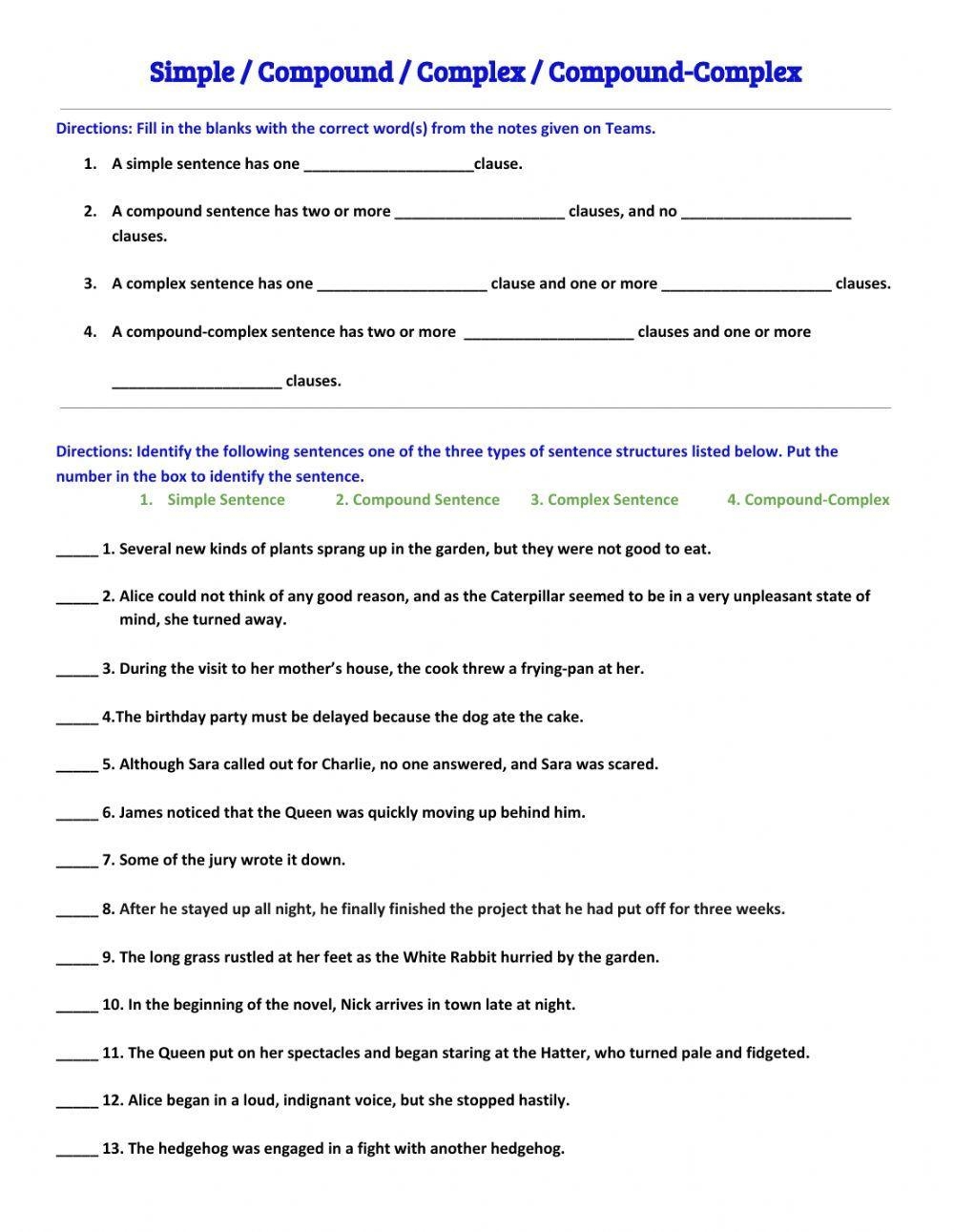Understanding the different types of sentences is essential for effective communication. Sentences can be categorized into three main types: simple, compound, and complex. Each type serves a unique purpose in conveying information and ideas. By learning how to identify these sentence types, you can improve your writing and make your communication more impactful.
Simple sentences consist of a single independent clause that expresses a complete thought. These sentences are straightforward and easy to understand. They typically contain a subject and a verb, and they do not include any dependent clauses. Simple sentences are often used to convey clear and concise information.
Identifying Simple, Compound, and Complex Sentences
Compound sentences are made up of two or more independent clauses that are joined together by coordinating conjunctions such as “and,” “but,” or “or.” These clauses have equal importance in the sentence and can stand alone as separate sentences. Compound sentences are useful for connecting related ideas or contrasting information within a single sentence.
Complex sentences contain one independent clause and at least one dependent clause. Dependent clauses cannot stand alone as complete sentences and rely on the independent clause for context and meaning. Subordinating conjunctions such as “although,” “because,” and “while” are commonly used to connect the independent and dependent clauses in complex sentences.
It is important to be able to identify simple, compound, and complex sentences in order to enhance the clarity and effectiveness of your writing. Simple sentences are useful for conveying straightforward information, while compound sentences can be used to connect related ideas. Complex sentences allow for the inclusion of additional information and can help to create more complex and nuanced arguments.
By understanding the differences between these sentence types, you can improve your writing skills and communicate more effectively with your audience. Practice identifying simple, compound, and complex sentences in your own writing to enhance the overall quality and impact of your communication.
In conclusion, being able to identify simple, compound, and complex sentences is a valuable skill that can greatly improve your writing. By recognizing the structure and purpose of each sentence type, you can communicate more clearly and effectively. Take the time to practice identifying these sentence types in your own writing to enhance your communication skills and make your writing more engaging and impactful.
